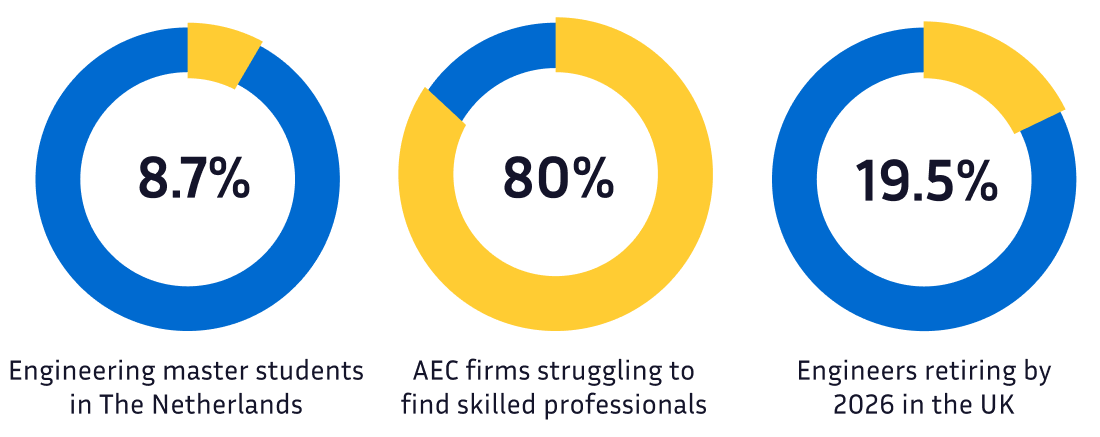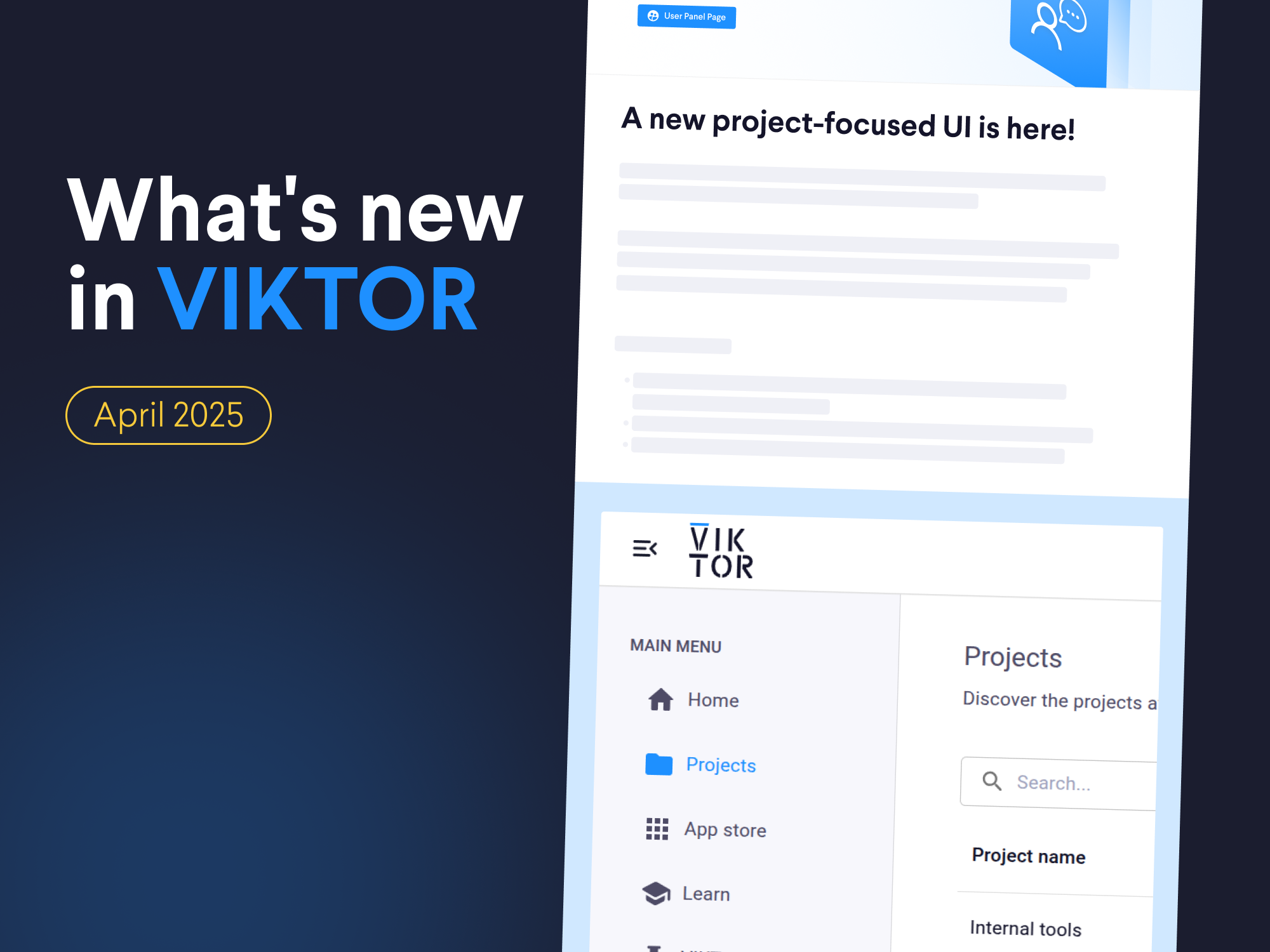Sign In
June 25, 2024
How the engineering shortage is driving the industry forward

by VIKTOR


Download the White Paper and get INSPIRED
In this whitepaper, we present a framework for engineering automation that helps you understand how you can create automation initiatives that generate real impact within your organization.
New engineering era marked by global shortage
Over the past years, statistics have repetitively shown the industry is running into a Global Engineers Shortage.
- 4 out of 5 architecture, engineering, or construction (AEC) organizations struggle to find qualified professionals. (AGC and Autodesk, 2023)
- In the Netherlands, only 8.7% of Master's graduates specialize in engineering. (Wageningen University, 2023).
- In the United Kingdom, only 61.2% of core engineering roles are currently filled, with 19.5% of engineers expected to retire by 2026 (Johathanlee, 2023)
- In the United States, there is a shortage of engineers to meet the demand for infrastructure projects funded by federal initiatives (American Society of Civil Engineers, 2023)
- Australia is projected to face an engineering skills crisis by 2040 (Professionals Australia, 2023)

This global issue has long-term effects, for example leading to a higher workload, as well as creating a more competitive market.
Zooming out, it forms a challenge for achieving better engineering overall. Engineers are tasked with important projects but have fewer resources and less time to accomplish things.
With this in mind, the industry is actively looking for a solution to increase productivity, save time and deliver better results.
Automation that creates real value
Many engineers are familiar with automation as the go-to solution for getting more work done in less time. Often starting simple with spreadsheet automations, visual programming, or simple scripting. However, the value of these tools is not explored to its fullest.
In most cases, traditional automation tools are used on an individual level or by a small group of people and data exchange still happens manually. To get real value from your tools, you need to find a good combination between two factors: usage and impact.
Usage: How many people and how often are using my tool? This is affected by how user-friendly and accessible the tool is and whether people know about its existence.
Impact: What are the results of using this tool (e.g. reduction in costs, and materials)? Generally, high-impact tools are more complex by nature (category 4 or 5 types of automation).
If your tool meets these criteria to a certain extent, it will fall into the high-value zone.

Start creating high-value tools
How come not all tools reach the high-value zone?
- They are not user-friendly enough to be (frequently) used by other people
- Using the tool on a certain basis does not make enough impact
It is our mission to educate engineers on these topics and help them acquire the skills they need to create high-value automation tools. In our most recent whitepaper, we delve deeper into this framework for what we call ‘high-value automation’ and provide all the information you need to start or continue your automation journey!

Download the White Paper and get INSPIRED
In this whitepaper, we present a framework for engineering automation that helps you understand how you can create automation initiatives that generate real impact within your organization.
Related Blog Posts
Get our best content in your inbox
Subscribe to our newsletter and get the latest industry insights


